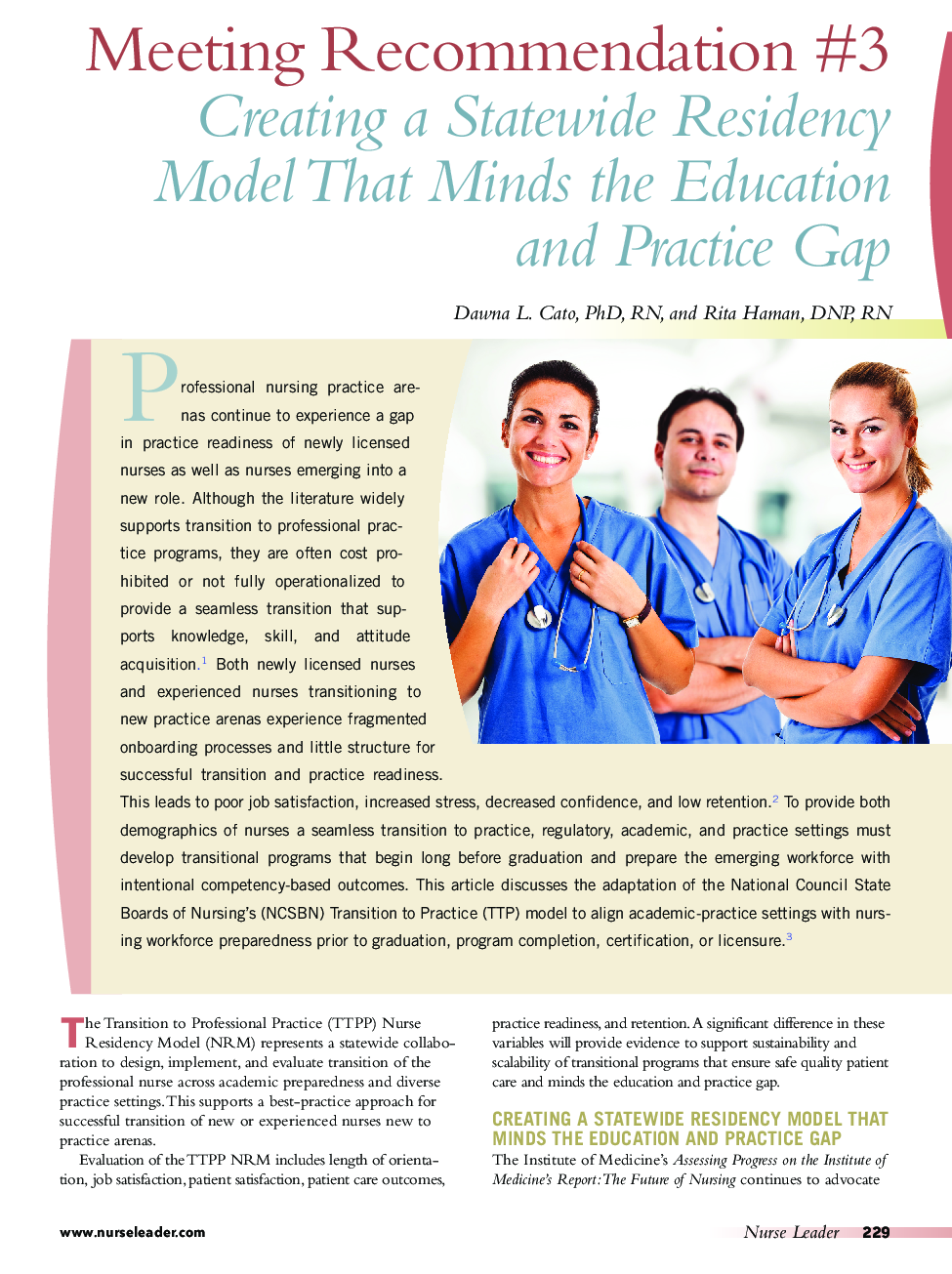| Article ID | Journal | Published Year | Pages | File Type |
|---|---|---|---|---|
| 8576650 | Nurse Leader | 2018 | 5 Pages |
Abstract
Professional nursing practice arenas continue to experience a gap in practice readiness of newly licensed nurses as well as nurses emerging into a new role. Although the literature widely supports transition to professional practice programs, they are often cost prohibited or not fully operationalized to provide a seamless transition that supports knowledge, skill, and attitude acquisition.1 Both newly licensed nurses and experienced nurses transitioning to new practice arenas experience fragmented onboarding processes and little structure for successful transition and practice readiness. This leads to poor job satisfaction, increased stress, decreased confidence, and low retention.2 To provide both demographics of nurses a seamless transition to practice, regulatory, academic, and practice settings must develop transitional programs that begin long before graduation and prepare the emerging workforce with intentional competency-based outcomes. This article discusses the adaptation of the National Council State Boards of Nursing's (NCSBN) Transition to Practice (TTP) model to align academic-practice settings with nursing workforce preparedness prior to graduation, program completion, certification, or licensure.3
Related Topics
Health Sciences
Nursing and Health Professions
Nursing
Authors
Dawna L. PhD, RN, Rita DNP, RN,
